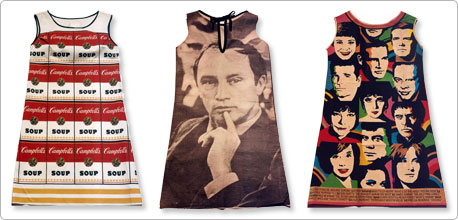Thursday, 31 May 2012
Thursday, 17 May 2012
Illustrations
Our latest assignment in class was to produce a streetwear illustration and a showstopper illustration of a current trend we have been researching. I chose the peplum which is a major trend at the moment. These are my two designs I created on illustrator.
Thursday, 3 May 2012
Spotted on the streets
Miroslava Duma
So my latest obsession is Miroslava Duma. She was the editor for Harpers Bazaar Russia and now writes for numerous publications such as OK Magazine. She has quickly become one of the most snapped and sought after starlets for her amazing street style fashion. When she steps out dressed to impressed it is no wonder everyone wants a snap, she's amazing!
Cultural signposts in fashion
The Influence of Art in Fashion
Pop art and op art were one of the first art trends to appear on clothing designs. They were popular art movements in the 1960’s, and while they were separate movements the public mixed them. Op art was first publicized by Time magazine resulting in fashion designers picking up these trends and modifying them for use in their clothing ranges. Chain stores advertised black and white themed clothing and bold pop art prints through television commercials, magazine advertisements and window displays in large department stores.
Street art is another major art form that has progressed into the fashion industry. Banksy is one of the most well-known street artists around the world. From gluing prints onto walls, billboards and streets all over the world, to then having a feature film produced about him, street art has become very recognized by the public. While Banksy now has his own clothing line with his designs featured onto t-shirts, hoodies and other street apparel, other designers are too jumping on the street art wagon and it is forever evolving. Street art is also featured in magazines and found in advertising events such as skating competitions and music events.
Mary Katrantzou is an influential designer in the fashion industry today. Her designs feature bold paintings, illustrations and graphic designs which are then printed onto fabrics and collaged together to create contrasting art. Her collections are featured on runways, in magazines and on blogs. She also did a ten piece collection for Topshop, which is having a major influence on street fashion.
Subscribe to:
Posts (Atom)





















